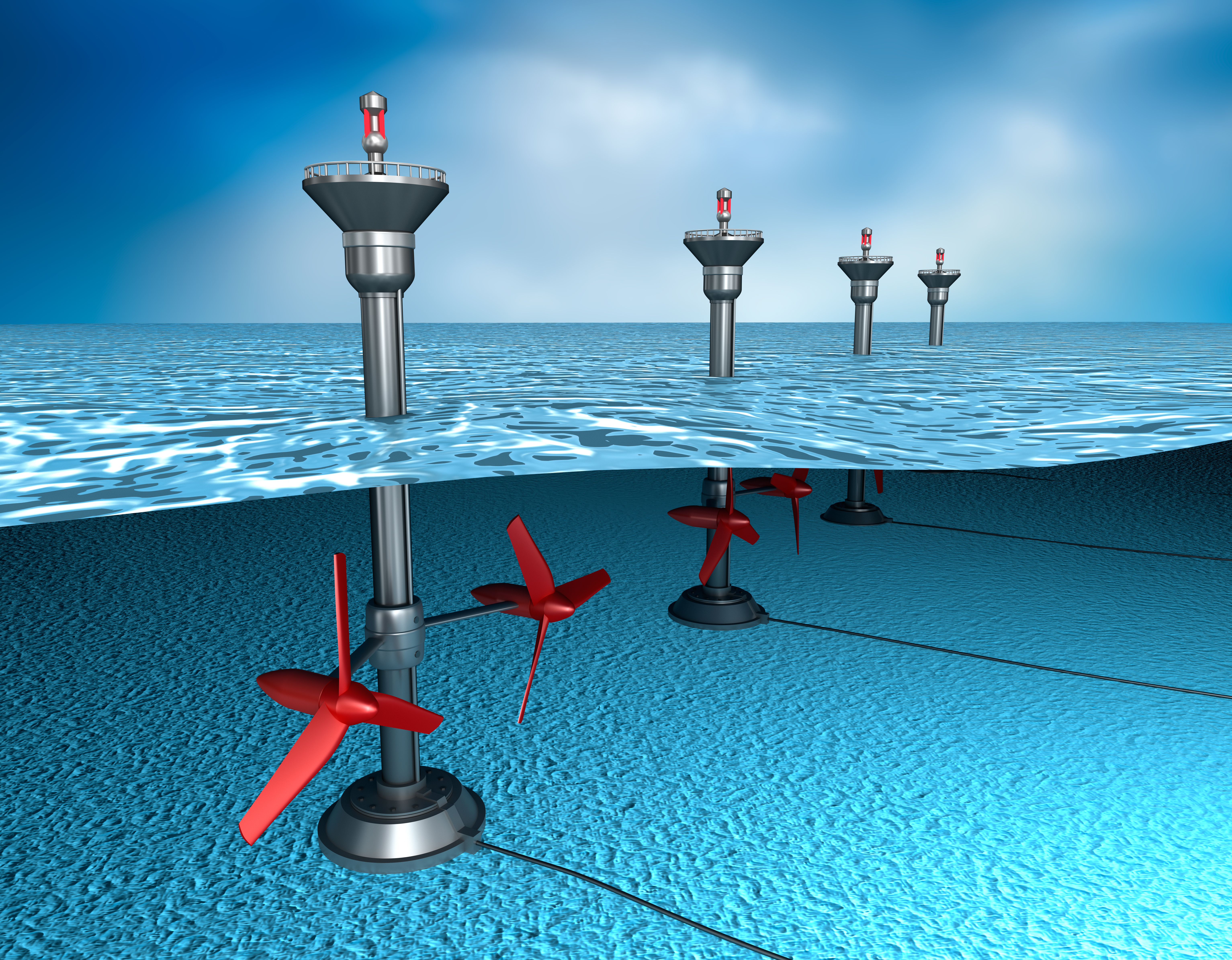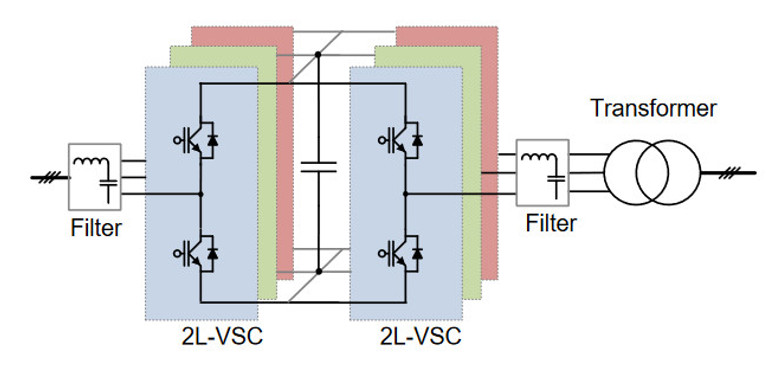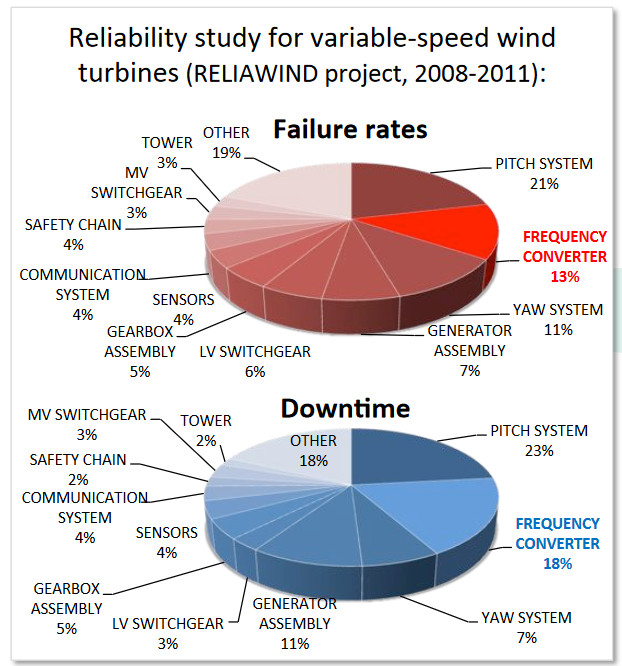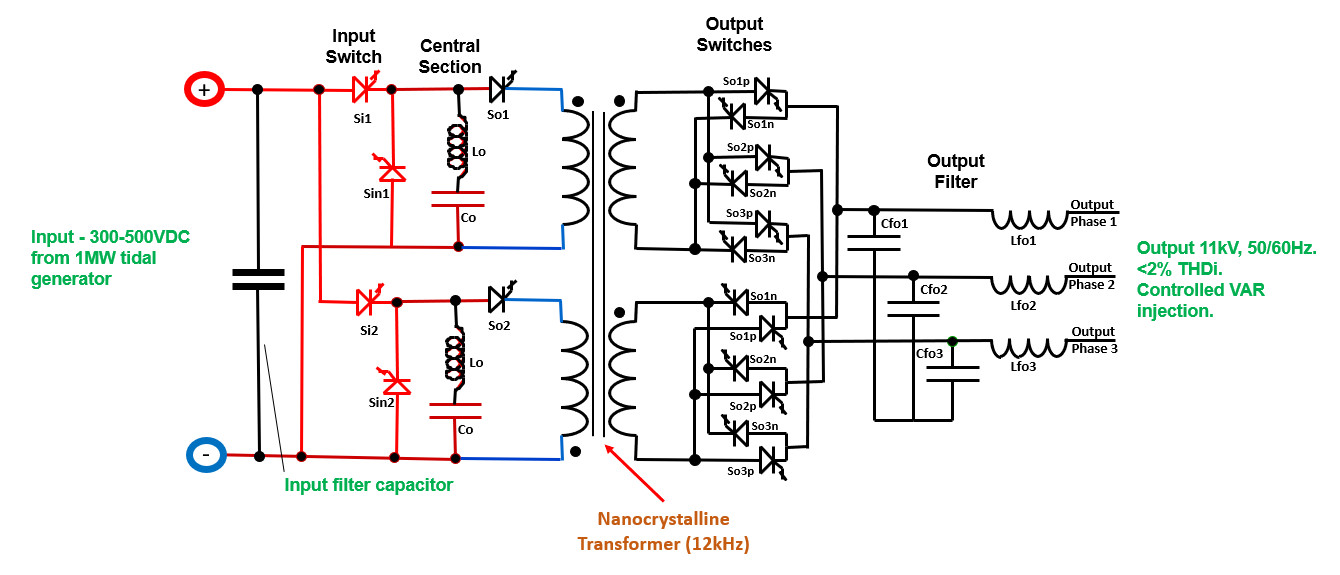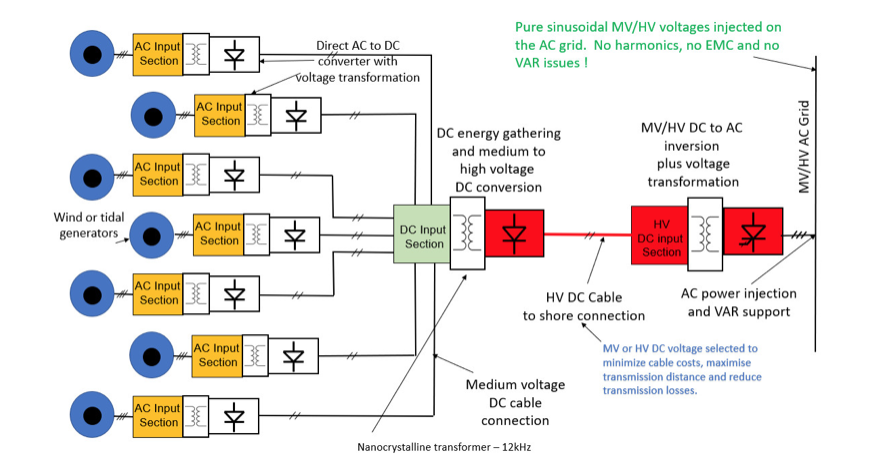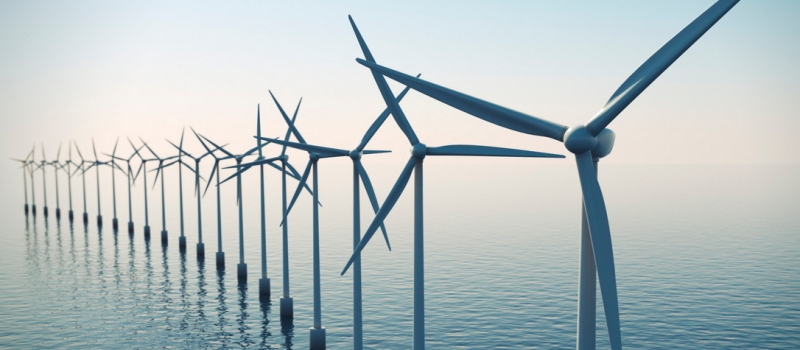
Over recent decades, increasing global temperatures, rises in sea levels and increased pollution, all due to carbon-based energy production processes, demand a reduction in ever increasing environmentally damaging emissions from fossil fuels.
In this context, renewable energy, especially solar, tidal and wind power sources are of significant importance to the World economy and environment.
The growth of renewable energy sources, especially wind power, has been tremendous over the last 20 years but have presented considerable physical and power electronic challenges. Solar power is relatively mature and is relatively low power, low voltage and will not be considered further in this presentation.
Tidal power, still relatively new, also offers great potential but also, due to its environment, presents considerable challenges including the energy conversion at site and its transmission to the shore.
Both wind and tidal generators employ ‘dual power’ conversion techniques (i.e. AC-DC into a DC bus and then the DC is inverted back in AC for transmission) using via harmonic filters and conventional transformers. The input rectifiers originally comprised diodes, however, over recent years there has been a trend towards IGBT (i.e. insulated gate bi-polar transistor) switches in the rectifier stages. A depiction of a simplified IGBT and parallel IGBT converter is shown in Fig. 1.
However, hard-switching IGBT rectifiers and inverters have a number of disadvantages. They are less efficient than diode rectifier convertors due to switching losses and losses in L-C-L input filters. They have increased EMI emissions, including common mode voltage and produce harmonic currents above the 50th order at the switching frequency of the IGBT rectifier; this is rarely measured but can contribute significantly to system losses and unreliability. As can be seen below, the unreliability of wind turbine converters (i.e. the frequency converters) is the single, major factor regarding the failure of wind turbines. Indeed, one of the salient comments made by Fraunhofer I regarding the illustration (Fig. 2) below is “high failure rates of power converters cause considerable maintenance cost and production loss.”
Resonant Link Technology for wind and tidal generator power conversion
The illustration below (Fig. 3) depicts the design of a Resonant Link converter developed for a tidal generator application. In this instance, the tidal generator voltage output is the 300-500VDC, depending on the state of the tide. The DC voltage is inverted to AC, stabilised at the desired value (i.e. regulated) and transmitted to shore at 11kVAC, 50Hz with virtually no harmonic voltage distortion, without reactive power issues and without additional short-circuit protection.
Compared with the PWM technology, which is unarguably the most widely used of the present, conventional power conversion technologies for renewable energy conversion, Resonant Link has a very significant number of important advantages.
Advantages of Resonant Link Technology
- Very high-power density (~5.5MW/cu.m.). Resonant Link converters are ~75-80% smaller than PWM converters of the same MW rating). This results in more space in the nacelle or in smaller nacelles.
- High conversion efficiency (~98%) due to the lack of hard of hard switching. An AFE based PWM converter has an overall efficiency of around 94% (including L-C-L filter). The high efficiency of Resonant Link results in significant MW power savings over the life of the turbine.
- Direct AC-AC conversion with less than <2% total current harmonic distortion (THDi) at input and output of the converter is standard with Resonant Link. No additional harmonic or L-C-L filters required. Significant less space required in the nacelle.
- Resonant Link converters have a very low dv/dt (rate of rise of voltage) of <15 V/μs (at 4.16kV, for example) thus reducing generator insulation failure and connecting cable problems.
- No additional harmonic or EMI filtering is required with Resonant Link so the physical size, weight, power losses in the nacelle are all minimized. Overall costs are significantly reduced compared to PWM and other convention technologies.
- Soft switching enables full converter operation up to 20 kHz and high efficiency operation at medium voltage (IGBTs and silicon carbine switches). Due to lack of hard switching, Resonant Link technology can convert power up more four times more per cu.m. than PWM technologies.
- Voltages, AC and DC, can be transformed without conventional transformers. Resonant Link transformers are nanocrystalline type operating at 12-20kHz. Since the diameter of transformer cores are inversely proportional to the frequency, Resonant Link transformers are very small and light in comparison of conventional transformers. For example, a 250kVA version weighs 11kg; an 1MVA version weighs around 45kg.
- Multi-port operation yields instantaneous redirection of power flow.
- Scalable to any power level with time-interleaved module switching operation. Resonant Link technology can be applied to wind and tidal turbine conversion applications up to 30MW (MV).
- Resonant Link has complete fault-immune operation, natural fault current limiting (zero-current turn-off, no shoot-through fault possibilities as found in PWM converters). Therefore, no AC or DC circuit breakers are required for short circuit protection, only isolators.
Wind and tidal power conversion, energy gathering and transmission
In addition to offering direct conversion of wind and tidal derived power, Resonant Link Technology can be applied in a total conversion, energy gathering and transmission to shore role. See Fig. 4 below :
As can be seen above each generator (wind or tidal) can supply DC voltage to the energy storage unit. From there the DC is ‘transformed’ up a higher level for transmission to the shore. The onshore converter then inverts the MVDC to AC at MV without harmonic distortion or reactive power and supplies it direct to the grid.
Note that no additional equipment for the protection of the DC cables (e.g. DC circuit breakers) are required. All the protection is solid state and catered for within the Resonant Link system.
This system is suitable for medium to large wind and tidal generator installations.
For more information please download our White Paper, “Powering Floating & Fixed Wind. Resonant Link Technology – The 21st Century Alternative” (March 2021).

